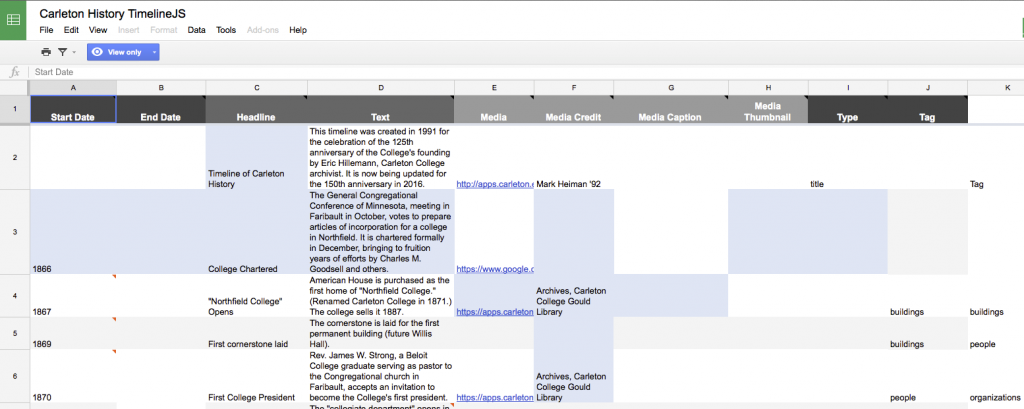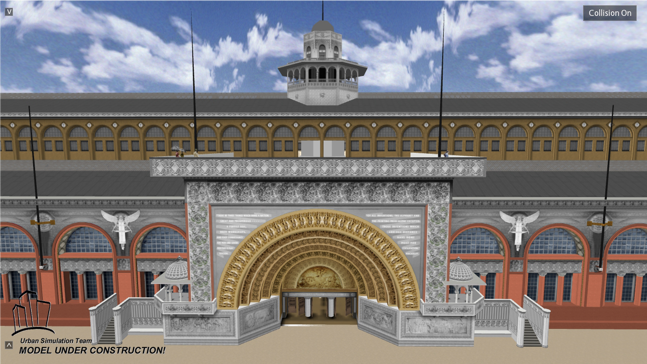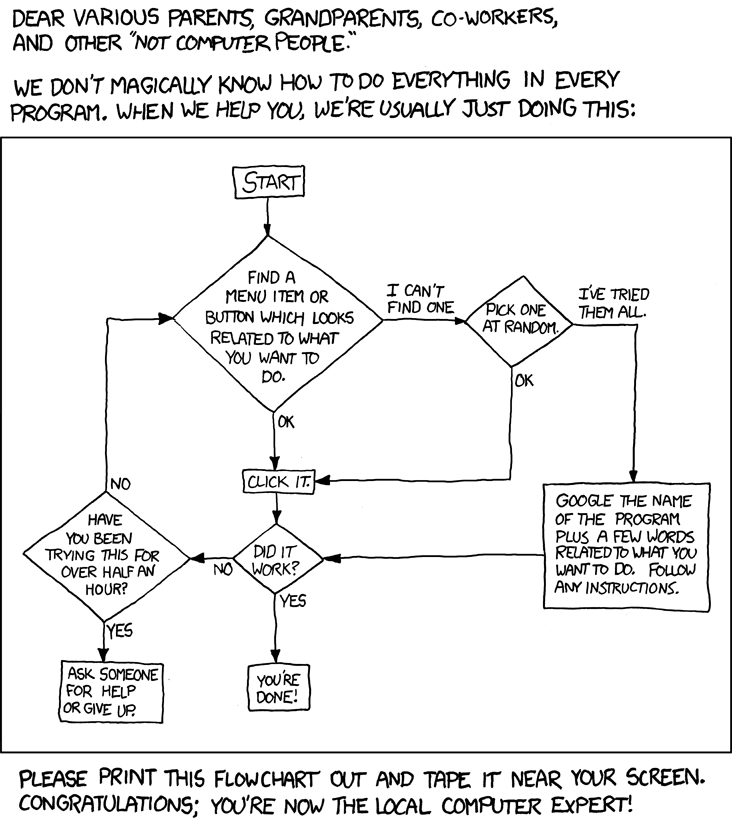Intro: 3D Basics
In the spirit of learning by making and diving in head first, we are starting with some relatively easy 3D modeling. This course's collective projects in the past have revolved around Carleton's built environment and building histories, and fabricating...
WordPress 101: blogging? Twitter? What year is it anyway?
Digital Humanities as Community, or Making Relationships
Debates over the definition of the Digital Humanities are by this point very clichéd , to the point that many people have begun arguing that we stop worrying about it altogether. There ...
Analyzing DH Projects
Today we are going to dive into what Burdick et al. call "The Basic Unit" of Digital Humanities, the project . We will examine the various component parts and learn how to analyze them effectively.
One of the most common reactions to seeing finished...
Web Development Fundamentals
HTML/CSS 101
HTML, CSS, and JavaScript are the bedrock foundations on which the world wide web (and therefore most digital humanities projects) are based.
HTML provides the basic structural markup that tells your browser what to do...
Humanities Data: Data Structures and Metadata
The Database Back End
In our continuing quest to explore what goes on “under the hood” of digital humanities projects, we are moving from the front-end client-side user experience to the database “back end” on the server side, where all the data st...
Data Visualization
This week we are going to explore the basic principles, and some concrete examples, of data visualization. You might think that data viz is something only scientists and quantitative social scientists are allowed to do, but there are an increasing...
Text Analysis and Network Analysis
Computer-assisted text analysis is one of the oldest forms of digital humanities research, going back to the origins of “humanities computing ” in the 1940s. Computers are well suited to data mining large bodies of texts, and with the...
Image Analysis and Artificial Intelligence
Today we are going to tackle two of the newer areas of inquiry for the Digital Arts & Humanities: image analysis and artificial intelligence. The past few years have seen an explosion of interest in both due to recent increases in the processing...
Virtual Humanities 1: Archive Project Launch
Immersive environments are one of the newest areas of DH experimentation. 3D simulation, Virtual Reality and Augmented Reality were until recently only accessible with high end hardware and produced end products that were so large they were hard to deliver...
Analog to Digital and Back
How to Make a Model
Manual 3D modeling techniques like those we've attempted in Fusion360 are very effective and have had a long history of producing impressive digital humanities projects. Lisa Snyder’s long-running project to recreate the World’s Col...
Spatial Humanities: Mapping 101
Spatial Humanities
This week we will be exploring the spatial humanities — a vibrant and increasingly popular area of digital humanities research. Humanities scholarship is currently undergoing a “spatial turn” akin to the q...
Web Mapping 101
The past decade has witnessed a proliferation of web mapping tools and platforms. These tools have long allowed the simple display of and basic interactions with spatially referenced data, but until recently, if you wanted to do any sort...
Cleaning Messy Data and Timeline Visualization
We've talked a lot in this course about messy data and the different benefits of tidy, clean, smart, big, etc. data. As you begin working on your final projects, you'll no doubt find or create some messy data that will need cleaning. Today, we'll practice...
Final Project Work Session
First, congrats on completing your midterm mini-projects! They look great so far and I’ll be giving you detailed feedback ASAP, posted in Moodle.
Second, well done on the final project proposals! I have commented on some of your group posts on t...
Tutorial Assignment
For this assignment, create a step-by-step tutorial as a blog post demonstrating a particular technique, tool, or other helpful how-to discovery you’ve made over the past several weeks in this course.
Pick a DH tool that we haven’t discussed yet...
Tutorial Demo and Final Project
Agenda:
Final Project Work in breakouts to continue work and start Presentation
Final Project — Data Vizualization (due Sunday)
Your final projects should contain at least one interactive data vizualization or interface to your data. T...














Overall, my experience with Fusion 360 has been pretty good. I feel like I have a pretty good understanding of the basics, and now I have to learn how to be more efficient with it. The trackpad experience isn’t too great, but it’s manageable.
I think fusion 360 is a good application to start 3D modeling. It was definitely challenging to navigate all the options first but definitely doable.
I think that this application is a good start to learning 3d modeling. At first it was difficult to get used to navigating the site but as I experimented more and more it started to become easier. I will definitely invest in a mouse to use in the future while doing the modeling work as it is tricky to use the touchpad.